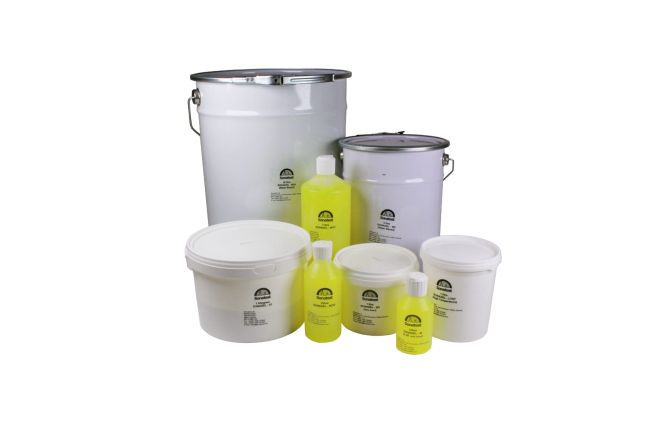Couplant
Our Sonagel product range is designed for use on all types of metallic surface and is especially suited to solving the problems of rough, pitted, uneven surfaces allowing smooth probe movement during testing. Each gel type is manufactured with precision and can be supplied with a part number for easy reference and ordering.

Sonatest manufacture and supply a range of ultrasonic couplants covering a spectrum of end user requirements. Customers can request a quote or place an order directly using their account with us.
The majority of NDT Testing applications require ultrasonic couplant to be used in order to facilitate the transmission of sound waves between the transducer (resting equipment) and the piece being tested.
Overall, couplants are non-toxic gels, pastes or liquids. Their use within Ultrasonic NDT is crucial as ultrasonic frequencies do not transmit adequately through "the air" and even tiny gaps between the transducer and the test piece/material can result in acoustic impedance, therefore inhibiting the resting procedure and the results. Our range is also designed with safety in mind, ensuring reliable performance without risk of corrosion to sensitive materials.
Couplant FAQs
In ultrasonic testing (UT), a couplant is a substance used to facilitate the transmission of sound waves between the transducer and the piece being tested. Sonatest couplants are essential because ultrasonic frequencies cannot transmit effectively through air. Using a couplant helps eliminate air gaps that can cause acoustic impedance, ensuring accurate and reliable testing results.
Sonatest manufactures and supplies a range of ultrasonic couplants covering a spectrum of end-user requirements. Our couplants are vital instruments in facilitating the transmission of sound waves between the transducer (testing equipment) and the material being tested in non-destructive testing (NDT) applications. Each product can be identified by its unique part reference for accurate supply and repeat ordering.
The majority of NDT testing applications require ultrasonic couplants to ensure accurate results. Ultrasonic frequencies do not transmit adequately through air, and even tiny gaps between the transducer and the test piece can result in acoustic impedance, inhibiting the testing procedure and affecting the results. By using ultrasonic couplants, these air gaps are eliminated, facilitating efficient sound transmission and reliable data.
The best couplant for ultrasonic testing depends on the specific application and environmental conditions. Sonatest supplies a range of ultrasonic couplants designed to meet diverse needs. For general purposes, water-based couplants are widely used due to their ease of application and cleanup. For high-temperature applications, a high-temperature couplant is essential to maintain performance without degrading under heat. Choosing the right type ensures optimal transmission of ultrasonic waves, accurate flaw detection, and long-term safety without risk of corrosion.
Our couplants are non-toxic gels, pastes, or liquids, making them safe and easy to use in various testing environments. They are crucial in ultrasonic NDT, as they provide a medium that allows sound waves to pass effectively between the transducer and the test material, ensuring that even the smallest defects are detected during inspections. For full specifications or to request a quote, please contact our team with the product number and details of your account.